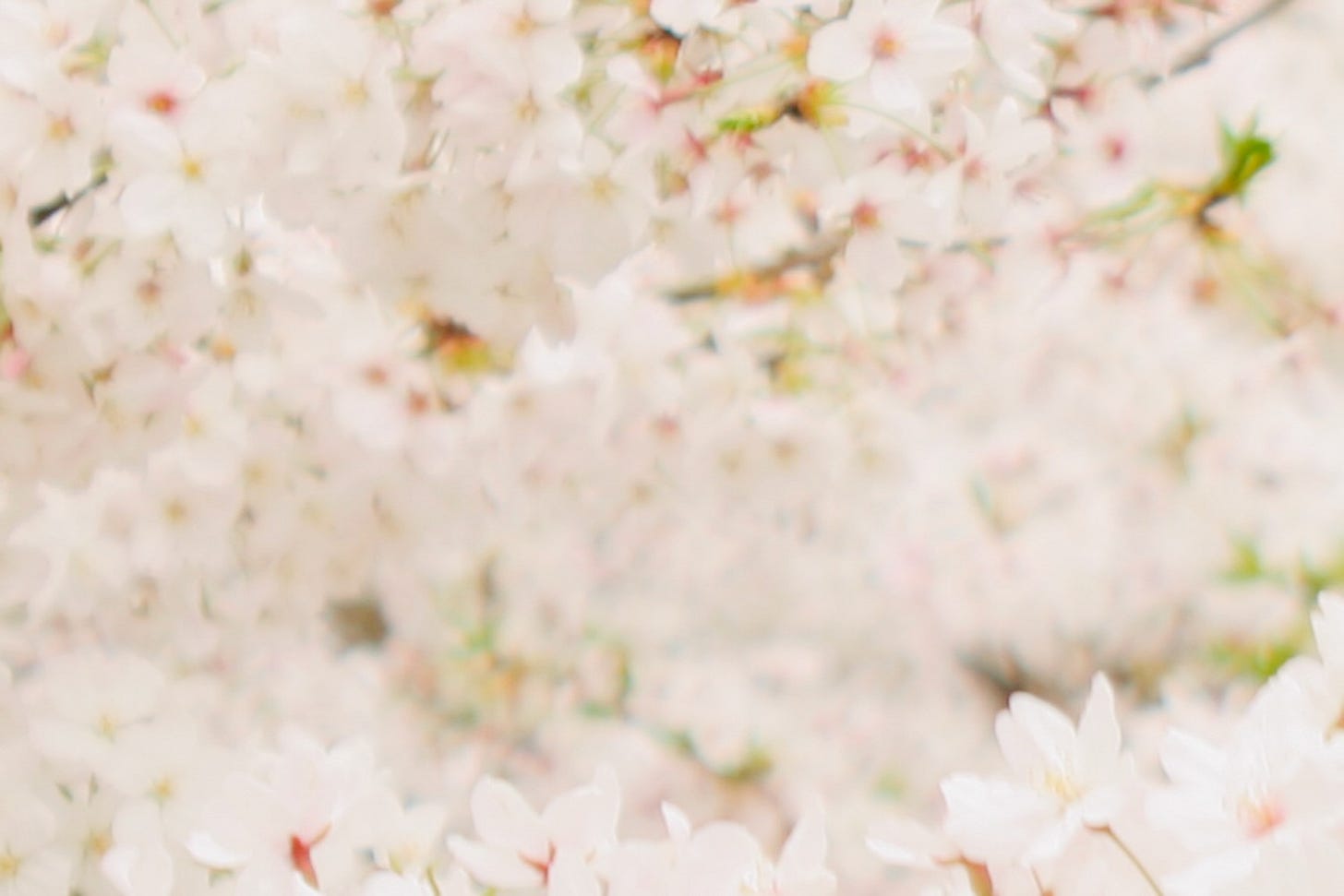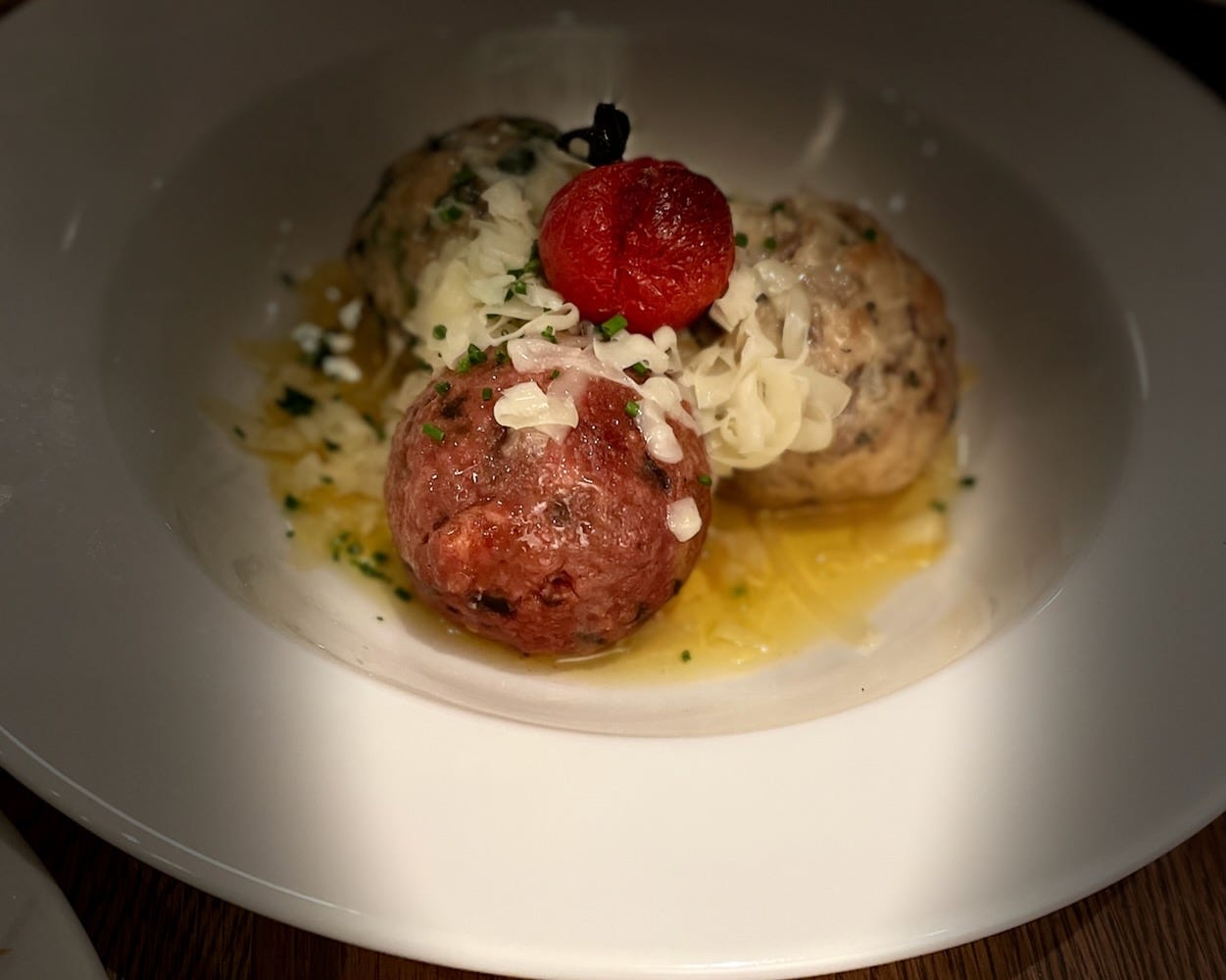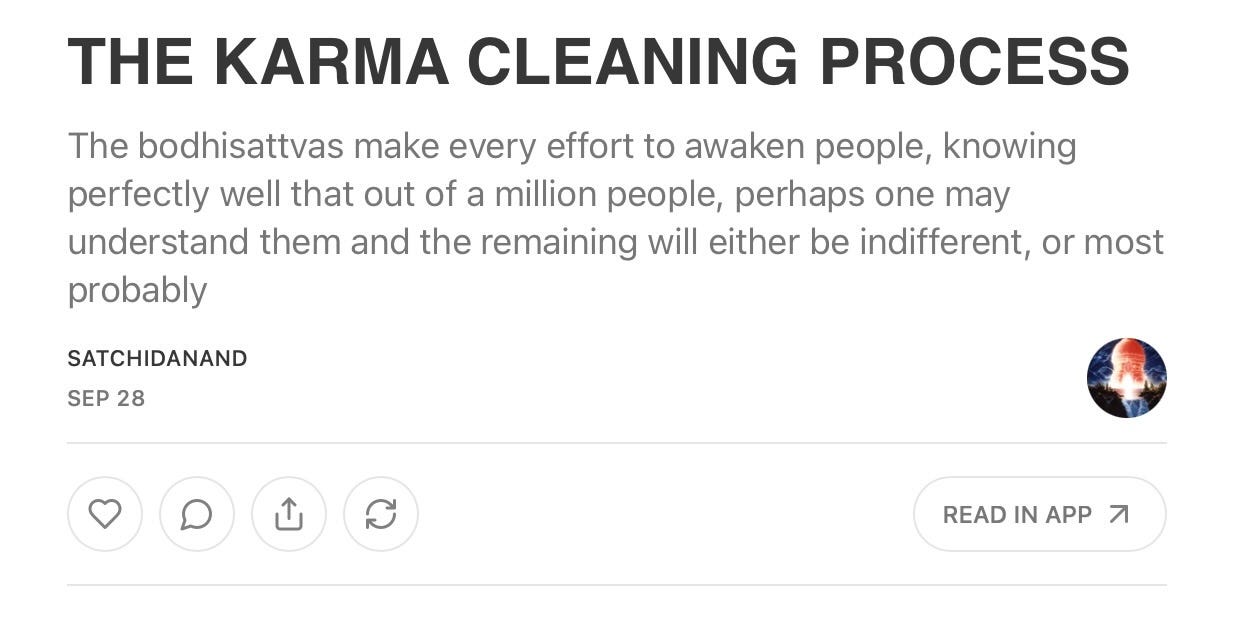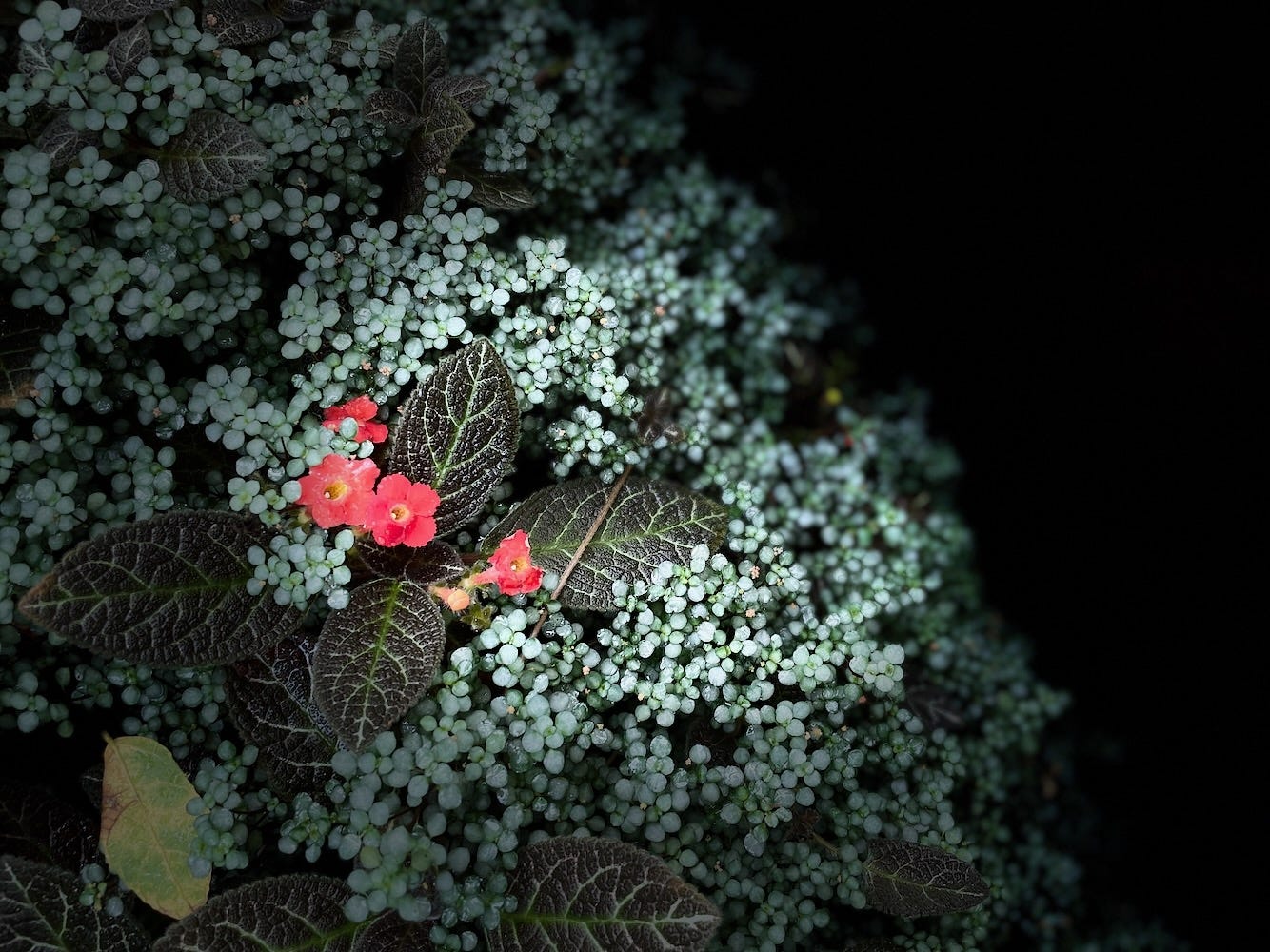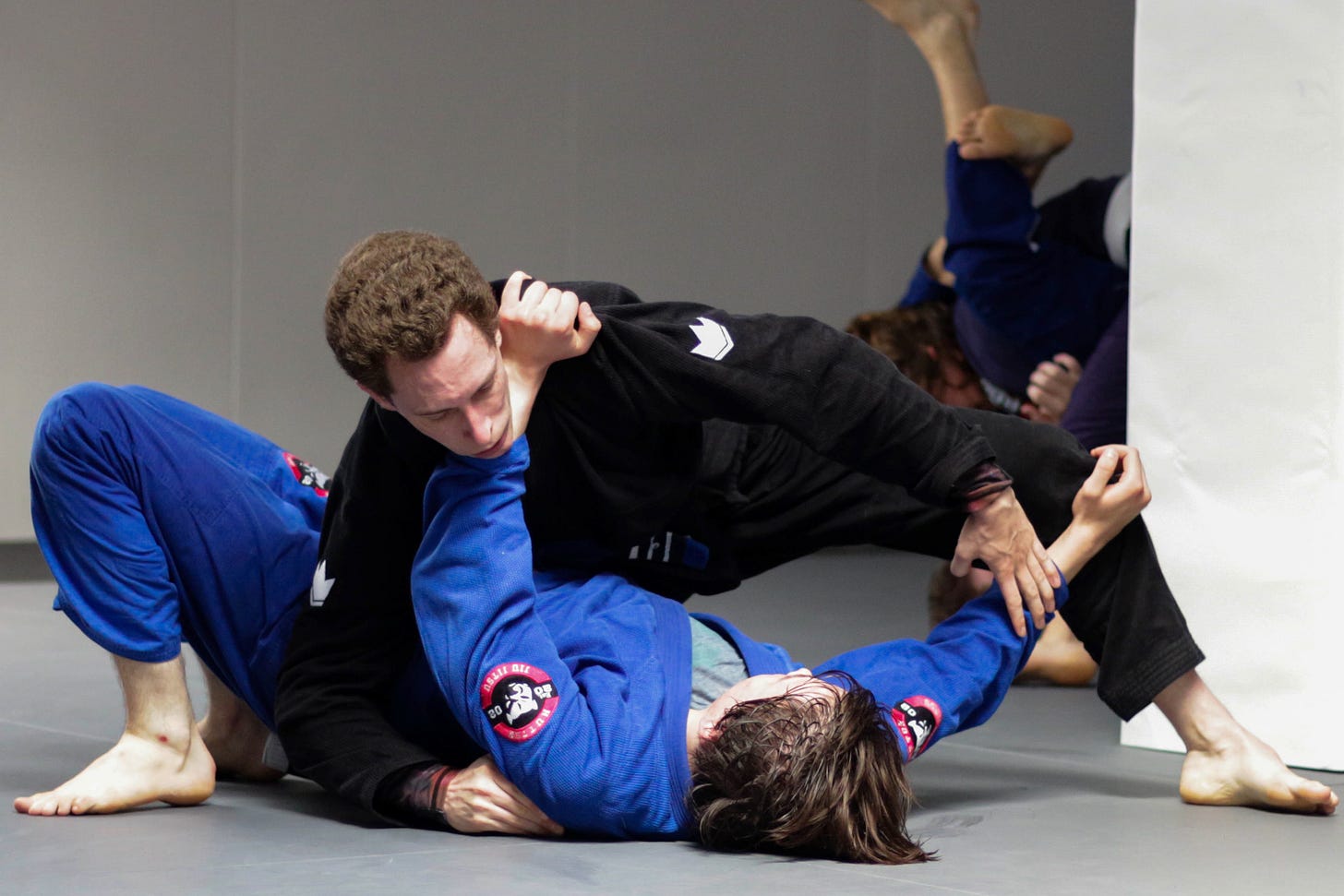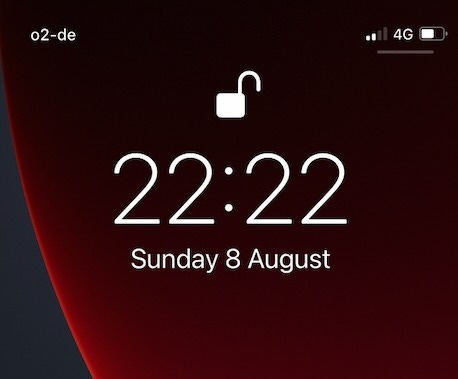1.12. Part 3- Inkstick
"When a mental modification of an object previously experienced and not forgotten comes back to consciousness, that is memory."
Who on earth is he?
This question loomed in my mind like an enigmatic title—written in elegant Japanese cursive script in the water of my subconscious.

21. The Silent Bloom
I gazed at it, entranced by the scene before me. The grey ink flowed gracefully in all directions. I felt compelled to rub the inkstick more onto the inkstone to darken the lines drawn in the water. Then, the scene of rubbing the ink appeared.
When practicing calligraphy, one usually clears one's mind for hours while rubbing the inkstick onto the inkstone. It is said that the ink becomes just the right thickness when done by someone without evil thoughts. Does this mean that I have evil thoughts at the moment? Suddenly, I thought, and felt as if I could smell the good smell of ink rising from the ink. The oily black surface of the inkstone reflected me like a mirror. I gazed at the scene for a while, concentrating on my breathing.
I intuitively understood that the paths this fragile line traced were seemingly liberated from the bonds of gravity, time, and space. Gradually, I began to sense that the directions in which it flowed held significance and pure meaning without any conditioning. It was like urging me deeper into the uncharted realms of my subconscious. I knew I might uncover the answer if I pursued these flowing trails.
After a month of practice, this was the first time I saw letters visually while meditating. A similar case occurred only when I intentionally wrote "Tower." In most cases, I understand, feel, or see without language intervention. Meditation seems to reveal connections far beyond words. In other words, verbalisation is an act that cannot be done unless one is conscious of it, and it inevitably involves the judgment of the person verbalising it; that is me.
When my eyes open, I normally have a swirling multitude of thoughts. This is when uncertainty settles into my mind like a heavy fog. The questions begin their relentless assault: What lies ahead today? What have I forgotten? Is there a path I’m too blind to see? So, I use words to ask others or repeatedly ask myself questions, which often wraps me in a cloak of nerves and anxiety.
But I have learned how to take off this heavy cloak. I sit in the lotus position, place my right palm facing up on top of my crossed legs, and gently set my left palm on top of it, with the tips of my thumbs lightly touching each other. The thumbs remain subtly joined, with no pressure, just a gentle touch, like two celestial bodies in orbit.
I closed my eyes, straightened my back, aligning my spine, and began counting my breaths, each cycle drawing me deeper into a profound stillness, both hands cradling a whisper of intention. I could feel a delicate connection that felt more profound than words could capture through the tips of my thumbs touched lightly; I will mysteriously be able to gain a deep understanding without putting things into words.
Why was this happening?
It's a mystery why this happens, but I'll try to explain it in my own words.
It feels like I have embarked on a sacred journey, traversing a vast mental desert where understanding flourishes without noisy distractions. There, feelings and truths bubble up from the depths of my being—knowledge that I have harboured, long buried, never articulated, yet which has always resonated. I liken this sensation to discovering a treasure hidden beneath shifting sands. Strangely, this treasure is not physical; it is something invisible yet palpably present, waiting for me to unearth it.
In this vast mental desert, I was digging—not with a shovel or a pick, but with the sharp precision of my consciousness. I sifted through layers of thought and emotion, uncovering insights that each one shimmered just beyond my reach. Though their forms remained indistinct, I could feel their weight, the gravity of their significance pulling me closer like a gentle tide. They called to me, yearning for expression and clarity, patiently waiting for me to give them a voice.
22. Dharma Mudra
At that moment, I found the first clue—the voice—a soft echo from the past like soft pink cherry blossoms. It was the voice of the Zen monk guiding me during our meditative practices, a steady presence amongst the serene walls of Kyoto's Zen temple imbued with centuries of wisdom.
His teachings had etched themselves into my soul, just waiting for this moment to surface. Now, the essence of “法界定印” (Hokkai—Tei-In) in Japanese, Dharma Mudra in Sanskrit, unfurled within me.
Buddhism teaches that the shape of the hand and fingers is not merely symbolic but a profound connection to the universe—a reminder that all existence comprises a singular truth known as Dharma. In Buddhism, this hand and finger shape, which I am forming right now in meditation, is called "法界定印(Hokkai—Tei-In): Dharma Mudra."
What, then, is “法界定印” (Hokkai—Tei-In)?
Hokkai (法界) in Japanese (Dharma in Sanskrit ) is a Buddhist term that signifies that all things arise and fade according to the law of cause and effect, an eternal wheel of change. Yet, amidst that relentless transformation lies an unchanging truth—a foundation upon which all existence is built. By embracing this Dharma, one can break the chains of suffering.
Tei (定) refers to calming the mind, purifying thought, and finding clarity in the pursuit of truth. With this clarity comes the unfurling of enlightenment, and each breath takes us to this realisation.
In (印) in Japanese (mudras in Sanskrit), hands and fingers are joined in a specific shape to represent symbols of the enlightenment carried by the Buddhas and Bodhisattvas. Each finger shape speaks a language transcending mere words.
In this meditative silence, the Japanese monk I met in Kyoto appeared and elegantly formed the Dharma Mudra. He then said that this was the Mudra when Buddha enlightened, and he melted into thin air.
At that moment, I got it, and my understanding blossomed like a fragrant flower in a quiet desert of knowledge. This invisible but real treasure, buried in the desert of my thoughts and waiting for me to dig it up, was indeed the Dharma. I found my mind stabilizing as I surrendered to this fragrance of my understanding. To uncover it, all I needed was to sit in the lotus position, form the shape of the Dharma Mudra, and embrace the silence like slipping into an ancient embrace.
Then, I sank deeper into the Dharma, following the long drop of black ink, which visually represents my question: Who on earth is he?
The answer seemed to lie somewhere deep within, waiting for me to excavate it. Soon, I found myself gazing down from the restaurant's ceiling. There I, which was another me, was sitting at the table.
23. Last Supper
August 14, 2021
The midsummer night buzzed with laughter and clinking glasses, the outdoor tables brimming with life at a quaint German restaurant. The outdoor tables were full, so we were offered a quiet spot indoors, which suited us fine. There was no other customer there. My faithful companion dog, Inca curled beneath the table, finding solace on the cool, brick-colored stone floor after the day’s heat.
To my right sat a young man, his olive-green T-shirt stark contrast against the rugged, thick wooden table. He was the one I had questioned about, the subject of my thoughts, the enigma I had sought to unravel.
We had just placed our orders, and an expectant silence enveloped us, light with unspoken words. This was my last night in Munich. I sat upright, put hands together, resting my cheek against my hands, a practiced pose to veil my unease. To calm the storm within, I closed my eyes, tilting my head slightly to the left, diving into the depths of my mind like a little brave girl plunging into a tranquil sea. In that light green ocean, I found solace, ocean swirling around me, illuminating the darkness of my unease with their gentle glow.
Just then, he shattered the silence, his voice breaking through the haze of my reverie. I opened my eyes. He said he wanted to share his impressions of me. I felt a shiver run down my spine. I straightened up, my head snapping to attention as I turned to face him.
He began describing me in an unexpected way. “You’re like someone who lives in the deep ocean,” he began, his voice steady and sincere. “Calm, serene, unshaken by the chaos above. You possess a powerful energy, swimming gracefully among the vibrant, colorful corals and creatures of the deep.”
My heart raced, thundering in my chest as if trying to escape. I wasn't sure if it was my own, sitting at the table or meditating. I was entranced, my eyes wide and unblinking, locked onto his olive-green gaze behind the lenses of his glasses. In that moment, I felt as if he had pierced through the veil of my thoughts, glimpsing the underwater world that thrummed beneath my surface. It was as if he had read my mind, unraveling the very essence of who I was, and it was a breathtaking moment, suspended in the depths of his words.
He continued to say that meeting me felt like finding light in his darkness. He had recently returned from England and was grappling with uncertainty, but he said my presence brought energy and hope.
The waiter brought our food, and I finally caught my breath. Our conversation drifted to trivial matters about our meals, but despite my usually sharp memory, I couldn’t recall what he had ordered or what I had eaten. All I remembered was the rhythm of my heart and a feeling of indescribable elation.
24. The Whisper of Curiosity
Once the meal was over, I placed my hands on the empty table, palms together, and brought them to my lips. I focused on the wood grain, savoring the silence as if enjoying the meal's afterglow. Months of training in the art of silence were beginning to bear fruit. It was he who broke the silence first.
“If you could be anyone or anything, who would you want to be?”
For a moment, the table's texture and the ink flow in my mind aligned perfectly. His question felt oddly familiar, as though it had emerged from another time.
Slowly, I raised my eyes from the table and turned my head to look at him. He seemed distant, even though he was right next to me. The soft brown of his hair caught the light, and suddenly, he synchronised with the boy I had met during meditation on the sacred hill, the one holding the Yata’s mirror.
The moment felt surreal. This question wasn’t ordinary—it was one I had once asked others, nine women, in Shanghai for a photo exhibition. No one had ever turned it back on me before. Yet now, here it was, mirrored back at me. This question felt like a secret word we'd agreed upon a long time ago.
After a brief pause, I answered: “Marco Polo.”
For the first time in my life, I observed as this particular meaningful answer was verbalised in my voice and resonated through the atmosphere, as if I were eyes on the wall. Sitting at the table, I shared how, as a child, I had dreamed of traveling the Silk Road, exploring exotic lands, and eventually reaching Japan, much like Marco Polo had. He laughed with me, a warm sound that filled the space between us.
He smiled, as if recognising something hidden and said, “Not bad. I always wanted to be two people: Marco Polo or Leonardo da Vinci. Since you claimed Marco Polo, I’ll pick da Vinci.”
I stared at him. Da Vinci had been my second choice. I had admired da Vinci deeply since childhood, devouring books about him and his works at my favorite bookstore, Libro. In that moment, I remembered why I was writing my meditation diary with my left hand—I was practicing writing with both hands simultaneously, just like da Vinci had done.

We talked about our shared admiration for Marco Polo and Da Vinci, which made our connection even closer.
Later, our chatter continued effortlessly as we strolled through the quiet streets. Suddenly, he sat on the wooden space for the summer event, and Inca joined him. My greyhound, Inca—a timid rescue dog—was strangely drawn to him initially. Her trust was rare and profound, a silent testament to his good spirit. Without hesitation, I settled beside them, the three of us sharing a strange, peaceful moment on a Saturday night. We talked endlessly about everything and nothing, until it was finally time to say goodbye. In that fleeting connection, we became friends.
25. Non-Linear Time Realm
After gaining a deep understanding of the Last Supper, my awareness wandered away from the memory and towards the traces of black ink that were part of my question. It's still going somewhere. I double-checked whether the tips of my thumbs were lightly touching each other. The thumbs remained subtly joined, like two celestial bodies in orbit of Dharma.
Then, I straightened my back, aligned my spine, and began counting my breaths, each drawing me deeper into sinking into the water of my subconscious mind. Again, I found the voice. It seemed a soft echo from the past.
"When a mental modification of an object previously experienced and not forgotten comes back to consciousness, that is memory."
I was swimming in the water of memories just like that young man with soft brown hair expressed, which was distinctly visible for colorful and vivid marine plants, with several rays of light falling from the above. The light produced a thousand delightful harmonies as its rays played amid the branches that were so vividly colored. It was so beautiful and divine. I realized that my subconscious was seeking this harmony. It all made sense.

In fact, I have been fascinated with scuba diving since the summer of my third year of university. I dive in Osezaki, located on the Izu Peninsula in Japan, almost every other summer weekend and sometimes in the Autumn. The bay is naturally sheltered, offering calm, clear waters with good visibility year-round. Additionally, the diverse marine life, including various fish species and interesting underwater topography, makes it a popular and attractive spot for divers of all levels.
What I like about Osezaki is that the presence of the Kuroshio Current (Black River or Black Stream) significantly influences Osezaki's marine environment. The Kuroshio Current is a warm, strong ocean current that flows northwards along Japan's Pacific coast. It brings warm, nutrient-rich waters to the area, which supports a diverse and vibrant marine ecosystem. This leads to the abundance of marine life that divers appreciate in Osezaki. The current also helps maintain relatively stable water temperatures. This Kuroshio was written in my favourite book, Twenty Thousand Leagues Under the Sea.
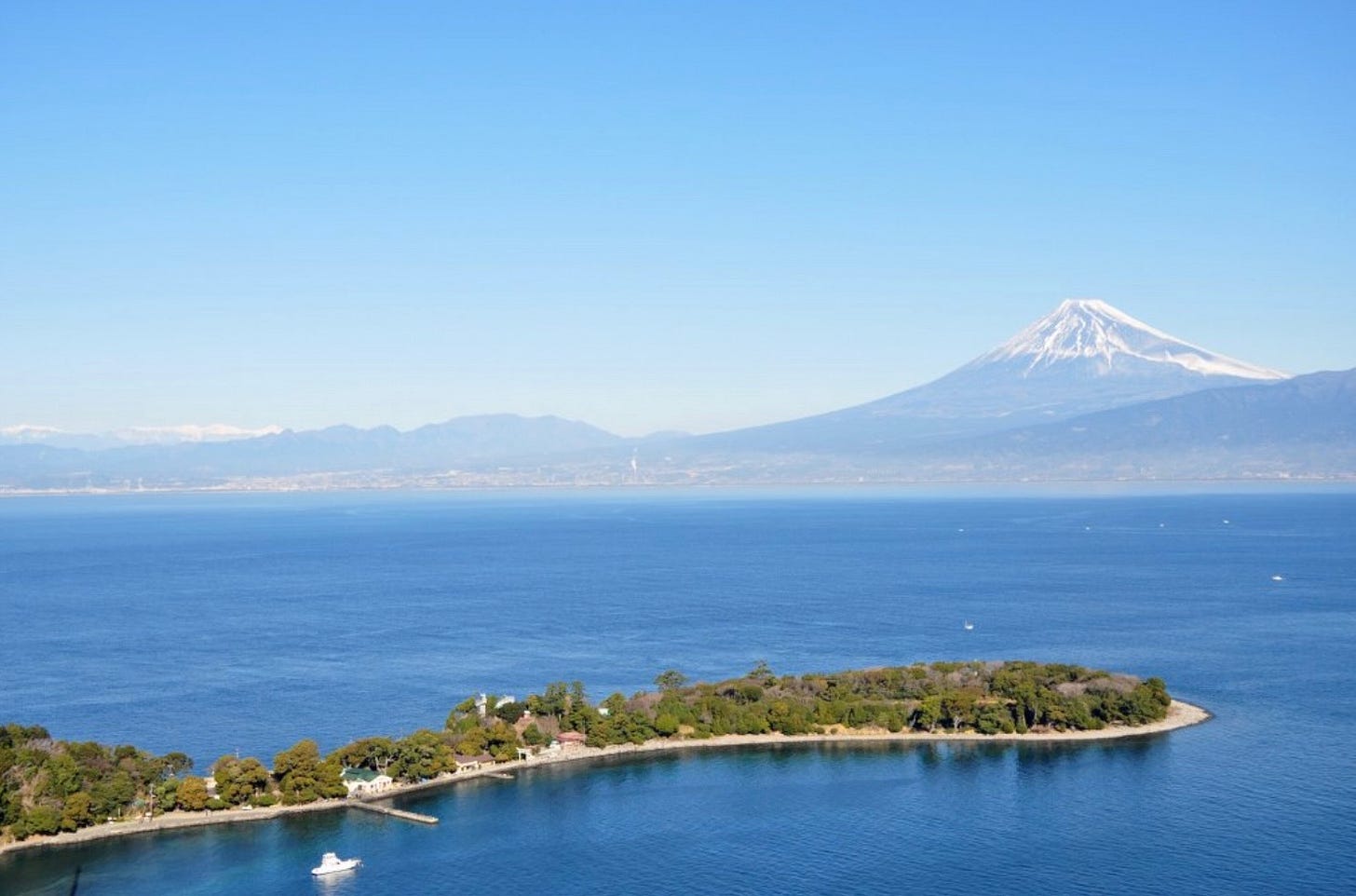
Then, my emotions moved, triggering me to recall a particular memory using mnemonics. I would use the mnemonic technique, focus on this feeling, and fly to a place where time folded and black ink joined.
The timeline appeared before me, stretching infinitely. I knew the concept of the timeline in meditation. Satchi told me about the karma-clearing process in Level 2, Initiations 6 and 7 in Energy Enhance Meditation. With Satchi's guidance, I cleared my Karma from this lifetime and my time in the womb.

Yet, this time it looked different. It didn’t seem linear, yet like a whirlpool, curving gently around me like a river bending toward an unseen destination. And there were streaks of black ink creating flowing patterns within it. I find myself in the middle of a large cycle of whirlpool.
I remembered that Satchi, my meditation teacher, told me that to my right, the past flows and to my left, the future expands, unknown but familiar, whispering with possibilities. Yet, something felt very different—some parts do not hold only the weight of what has been; instead, it was illuminated, as if the past has been made whole. I guess other parts, probably the future, feel distant, still forming, waiting for my steps. All mixed in and moving cycles and all moments existed within a larger flow.
I hovered above and observed it, moving up and up to see the bigger picture. However, I didn’t catch the complete picture. I glimpsed this whirlpool connected to my subconscious water, which has a bottom. Strangely, water flew upward. I intuitively thought, “Ah, because of non-gravity in Dharma.”
I dove into the heart of the most intense vortex, where the tides of time, the black ink, and my emotions intertwined. There lay the subconscious strait.

I was watching myself, like revisiting a scene from a movie. It was as if I were looking down at my past self.
26. Botanical Garden
August 11 2021
The scene of memory was three days before the Last Supper. I was walking with my dog Inca through the botanical garden in Munich. It was a midsummer afternoon, with the sun high and not a single cloud in the blue sky. The next to the black greyhound Inca, he was walking, wearing a dark green long-sleeved shirt with a hood. Under such imposing strong sunshine, I felt sorry for the black dog and the young man wearing a long-sleeved hoodie and black jeans.
I visited Munich because of the English garden. For three days, I walked around the gigantic English garden with my dog Inca with slight expectation that I would find the echoes of my second meaningful lucid vision. But it had eluded me. I couldn't find any place similar to the English garden. Things may not always work out that smoothly. I was beginning to question the importance of the lucid dream. But in the vast green park, my dog Inca was running freely, and I was enjoying myself doing yoga, lying down and reading a book, and meditating.

One afternoon, while African drums played powerfully all around me in the English Garden, my mobile phone rang. It was that young man. He asked me whether I had visited the botanical garden in Munich. I answered no. To begin with, I told him I didn’t even know there was a botanical garden. It was his favorite place in Munich, so he said we should go together if we had plans. We arranged to go there early on Wednesday morning, August 11, 2021.
The botanic garden was another expansive place in Munich, filled with life and energy yet serene. We wandered the garden, my greyhound Inca patiently walking beside us despite the heat. At first, we didn’t talk much, simply enjoying the space and each other’s company. A conservatory brimming with tropical plants reminded me of places I’d visited before—Kew Gardens in England or the botanical gardens in Sydney. It also evoked memories of English manor houses in Cornwall, with their sprawling gardens and timeless elegance.
We walked through the garden, speaking little but content in our quiet companionship. The boy and I seemed to fall into a natural rhythm, simply absorbing the beauty of our surroundings. I can’t recall the exact topics of our conversations—perhaps we spoke in fragments, exchanging lighthearted remarks—but a sense of nostalgia swept over me as we walked there.
Something about the garden—the vastness, the old-world charm—triggered a memory or a lucid dream. I felt as though I had walked in a similar place before, arm-in-arm with a gentleman, as though stepping into a scene from a Victorian or Georgian era. Then, in a sudden burst of inspiration, I turned to him with an unusual request.
“Let’s walk like a gentleman and a lady from the Georgian era,” I said with a smile.
At first, he laughed and refused. To my surprise, he eventually agreed and offered me his arm. I said, imitating Queen's English as much as possible, "It was very kind of you." I slipped my arm through his, and at that moment, we realised we were of the same height. I am 175 cm high, quite tall for a Japanese woman but average for a European man.
Then, holding Inca’s leash in my other hand as elegantly as possible, we strolled through the garden, embodying characters from another era. We became a lady with her Greyhound and a gentleman walking through the gardens of a grand estate.
Something was enchanting about it—a timeless quality, as if we had slipped out of the present and into a memory that wasn’t entirely ours.
27. Dream Realized
We entered the next garden. Among the winding paths and the background of the glasshouse, I saw déjà vu. A green gate stretched ahead, its walls formed by ivy or other greenery. It looked like a natural gate—a tunnel leading somewhere unknown. It called to me, almost like an invitation.
Something stirred deep within me and a strong nostalgia. I stood there for a while, caught between déjà vu and reality.
Was this proof that my lucid dreams were more than dreams? That the unseen world weaved into waking reality when I was ready to see? How come? I thought this place would have been in Munich's English garden, but I found it in the botanical garden, where he told me to go together. What is this nostalgic urge to walk through the ivy-covered passage? Why did this feel like completing something unfinished?
“Let’s go through it,” I said. I must find the answer. Together, we walked through the gate. Something about this moment felt fusion, like we were stepping into another dimension where time slowed.
It wasn’t just the beauty of the path—it was as if my soul recognised this place. Every step felt deeply satisfying, like I was touching something eternal. I didn’t speak, and neither did he.
When we emerged on the other side, I let go of his arm as if the moment was complete.
28. Pleached Alley
My consciousness returned to the moment I was meditating on the hill. I consciously imagined myself meditating under this green gate. Its structure seemed to have magical power. I felt dappled light and a unique sense of enclosed security. I searched for the right word and meaning for this green gate in my memories because I remembered reading about it long ago. Yes, Francis Bacon wrote about it in his essay “Of Gardens,” it was called a pleached alley. Sir Bacon describes it as avenues formed by intertwined trees or shrubs to create archways. It serves another purpose: it invites contemplation. Like me now, I was in serene, immersive meditation.
I naturally understood I was at a turning point, where the dream world and reality merge. Then, the power of the pleached alley, which Francis Bacon admitted, calmed the water of my subconscious mind, revealing elegant ink lines that told me my quest was not over. I followed the ink lines with a serene mind.
29. Mystical Numbers
August 8 2021
I found myself at the kitchen table in his flat, watching him cook Bibimbap—a vibrant Korean dish. Exhaustion kept me pinned to my chair, and I could express my gratitude for his kindness in inviting my dog Inca and me to supper after such a long, stressful day. I chose to speak little, observing instead. Inca, usually restless, settled on the blanket he’d spread next to the table. Her calmness surprised me—she seemed entirely at ease, lying still and quiet, as if this moment was familiar to her too. It was late evening on the first day in Munich.
Although this was our first in-person meeting, we had been connected for months, studying Japanese together. We shared interests: a mutual passion for martial arts—both Brazilian, our experiences in England, a love for anime, and even our taste in music and books.
The room was filled with the soft sounds of chopping, running water, and the occasional clattering metal utensil, while the rain outside continued its steady rhythm.
Out of nowhere, he asked, “Do you know The Book of Five Rings?”
His question stopped my observation. This was the third time a stranger had mentioned that book, which seemed odd, in a world overflowing with books and words.
“Yes,” I replied. “I’ve read it long ago.”
He nodded, visibly pleased. “Musashi Miyamoto, the samurai, wrote it,” he said.
Ink Wash Painting of Legendary Samurai
Musashi Miyamoto was a legendary Japanese swordsman and philosopher. He was renowned for his unique double-bladed swordsmanship and undefeated record in his 61 duels. Born in 1584, he became famous not only for his martial skills but also for his strategic thinking. Later, when he was 60, he authored "The Book of Five Rings," which we were talking about now.
He continued, his voice absorbing new energy. "There's a manga called Vagabond about his life. I'm a huge fan." The words caused a small ripple in my interest. I offered only brief responses, saying that I hadn’t read the manga but knew of it. He launched into the manga's plot. He seemed deeply drawn to samurai ideals, so his passion seemed contagious, and I was intrigued to search my forgotten memories about this manga.
Long ago, I saw an ink wash painting of Vagabond hanging from the ceiling in an art museum in Japan. It was by Manga artist Takehiko Inoue. Inoue expertly utilised light and shadow with fluid, dynamic brush strokes to create depth and mood in his drawing. Its realistic details, from characters' expressions to the textures of clothing and the environment, were highly focused on. I thought that I finally met the real Musashi Miyamoto, legendary Samurai. I was impressed by this contemporary ink wash painting by Manga artist.
I listened to the plot while imagining a realistic Musashi by ink and a brush. When he explained the movement during fight scenes, a splash of blood connected to the ink lines—not only the ink lines of the Musashi figure but also the ink that was a part of my question, those created my visceral experience, as if making battles feel intense and captivating. The fatigue began to melt away.
Thanks to Musashi, our conversation flowed effortlessly, and the rhythm felt familiar and exhilarating. At one point, we both glanced at our phones simultaneously, noting the time: 22:22. We noticed we had the matching iPhones but didn't say anything, the moment hanging in the air. We resumed our chatter, only to glance at our screens again, seeing 2:22.
It was already too late for the metro, so we talked through the night until words dissolved into silence. Rest came only briefly on the couch before dawn called us back to the waking world.
On Sunday morning, August 9th, we had a cup of coffee in the nearby cafe, a gentle start to what promised to be a new day. The sun was warm on our faces. I walked through the English Garden with my dog and reached the metro station.
30. White Platform
August 8 2021
The memories began to arrange themselves like puzzle pieces. Then, I was back in the first place when I had just arrived in Munich.
Rain poured down, and darkened the world around me. While I was talking on my mobile, I walked and made my dog happy.
“Where’s the closest metro station?” he asked.
I paused, swiped my iPhone's screen, and opened Google Maps. There it was—Universität, just an eight-minute walk away. I relayed the information, and he agreed.
“Okay, let’s meet there,” he said.
I hung up the phone, took a deep breath, gathered my resolve, and set off with Inca, my sleek greyhound, by my side. The rain soaked us, but it was a refreshing embrace, a cleansing of sorts in the summer evening. We arrived at the station, bought my ticket, and even got one for Inca—Munich was dog-friendly, allowing dogs in most public spaces.
The “Universität” station was unlike any usual metro station; a single open-air platform, dimly lit and shrouded in an eerie quiet. I climbed the stairs, the faint glow of lights reflecting on the wet surfaces. I wasn’t sure how he’d spot me, but I was confident he would. I’m a tall Japanese woman with a black greyhound—he can’t miss us. I sat on a bench, Inca lying at my feet. Closing my eyes, I let my thoughts drift, replaying my journey in my mind.
The distant roar of an approaching train shattered my thoughts as if on cue. The hiss of air, the clatter of metal, the rush of passengers swirled together in a symphony. Then it quieted again.
This cycle was repeated several times. I was meditating and looking down from above, noticing a strange sight. Each arrival sent ripples through the realm of time, a vortex forming over the platform pulling everything into its swirling embrace, like in a washing machine. The black ink streaks, the platform, the falling rain, me sitting on the bench, and Inca the dog sitting on the concrete were all sucked into the vortex. I was observing this like a seagull flying above the whirlpool.
As the next subway train barreled into the vortex, it pierced the fabric of reality, creating a gaping maw through which time flowed like water from a bathtub drain. Then, in a breathtaking moment, everything was washed away.
There I saw a pure white platform, a pure white landscape, my pure white dog Inca, and me, pure white. The doors of a pristine white train slide open, and a wave of ethereal passengers surged forward.
It struck me—this scene felt eerily similar to my first lucid dream. Was this mere coincidence?
“Yuko?” A gentle voice broke through the silence. I found myself standing on a pure white platform.
There he was.
He was clad in black, with black-framed glasses. His pale skin glinted against the starkness of the white world, and he looked much younger than his age. The boy with soft brown hair was outstanding in a white world. He was like an inkstick.
In that instant, I understood—this was the answer. He is an inkstick, a source of ink that asks me questions, reminds me of something I had forgotten, and leads me to the answer, just like ink did for this meditation.
To be continued to 1.13. Tea Party
Dearest my Subscribers and Readers,
Thank you for reading my story—Chapter 1.12- Part 3-Inkstick.
First of all, I sincerely apologize for the delay. I originally planned to publish this chapter in February, but life had other plans. My Mac, which holds all my photos, ran into serious trouble and has been in repair for almost two months. Being an amateur, I didn’t have a backup for my photos, so I had to wait.
For some, this story might be a bit complicated—perhaps even confusing. It captures an experience from my meditation, but this time, something new happened: I asked a question that no one around me could answer. If you’ve followed my writings, you may recall the concept of the mind computer—a term my meditation teacher, Satchitanand, introduced me. He explained that I could ask any question to my mind computer, so I decided to try it.
The process was fascinating, and I highly recommend it. Since this meditation experience, I’ve habitually asked my mind computer difficult questions that linger in my thoughts without resolution. And somehow, through meditation, I could find answers.
This chapter delves into that experience, moving through timelines and exploring the idea of nonlinear time. Each person may have a different perception of time, a unique way of processing answers, and their own path to understanding. But in the end, what matters most is that moment of clarity—when everything clicks, and you know, "Aha, I got it! "
Meditation takes patience. It’s a daily practice: sitting in lotus position, forming the Dharma Mudra, straightening the spine, closing the eyes, and focusing on the breath. But with time, something shifts. The inner transformation begins to reflect outward, subtly shaping life itself. I sincerely hope that my experience with meditation will be helpful to you.
Once again, I truly appreciate your patience and support. Thank you for walking this path with me. The next chapter will come soon, and I look forward to sharing more.
Wishing you a peaceful evening—see you soon.
With gratitude,
Yuko





